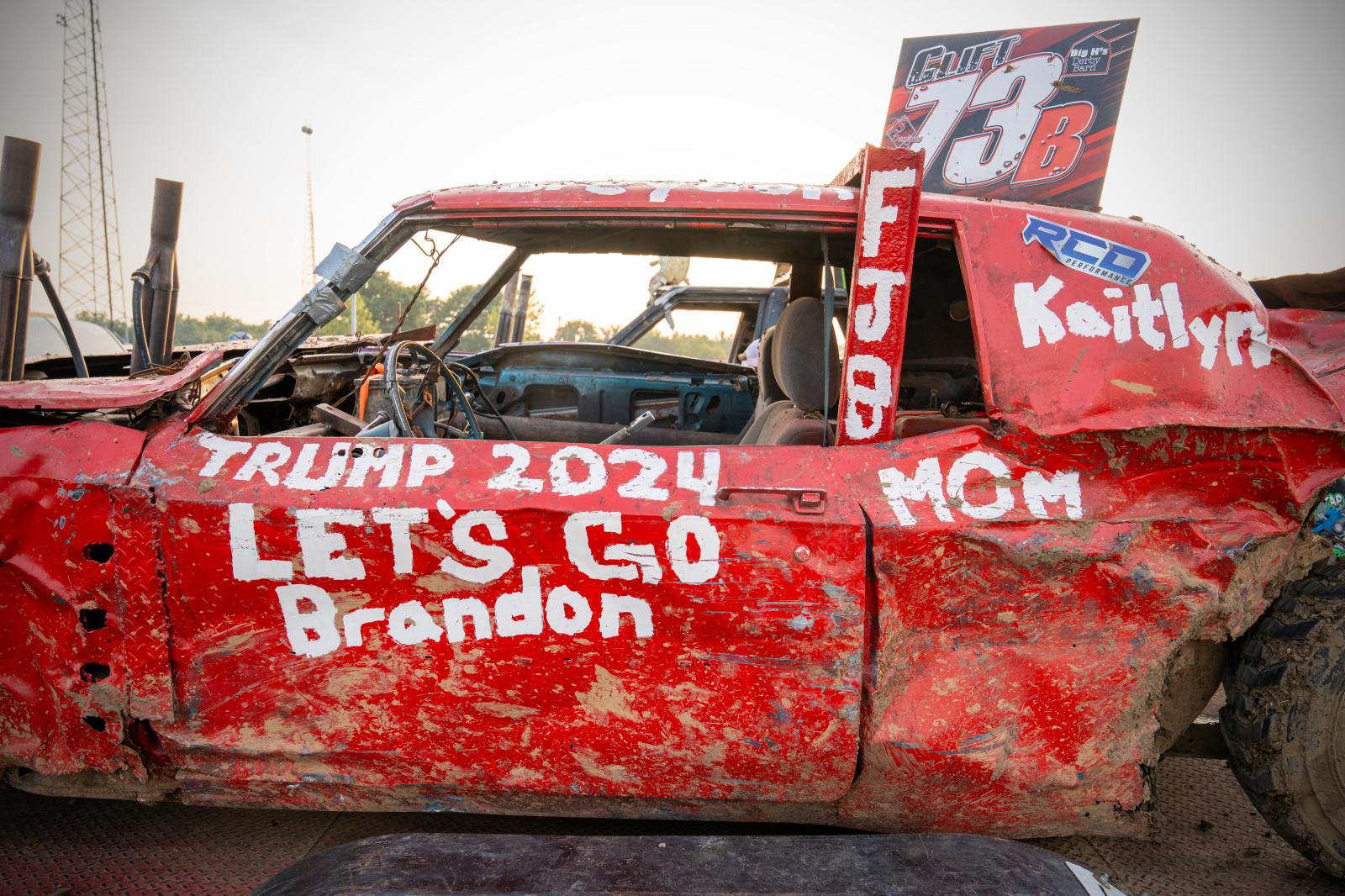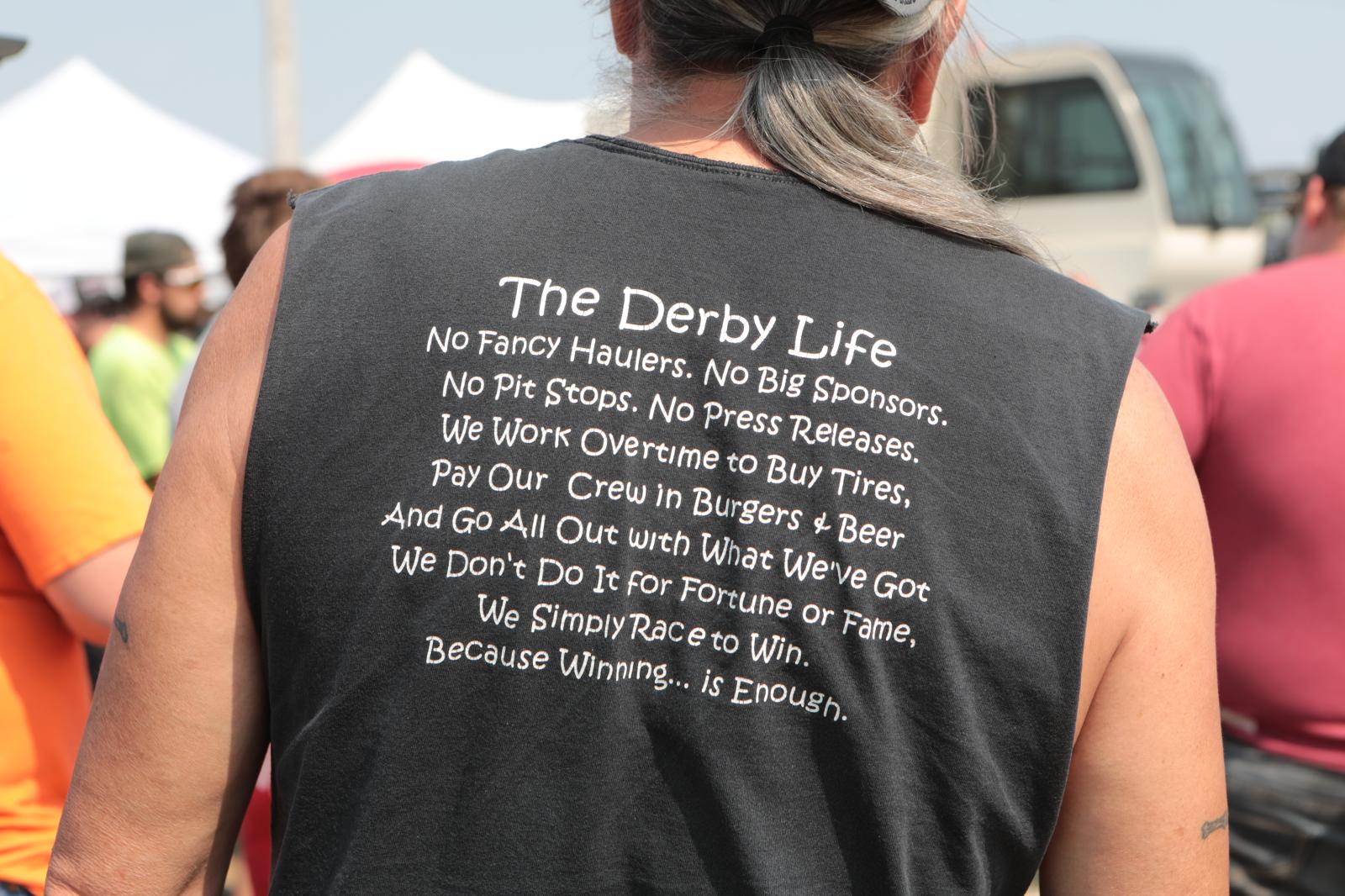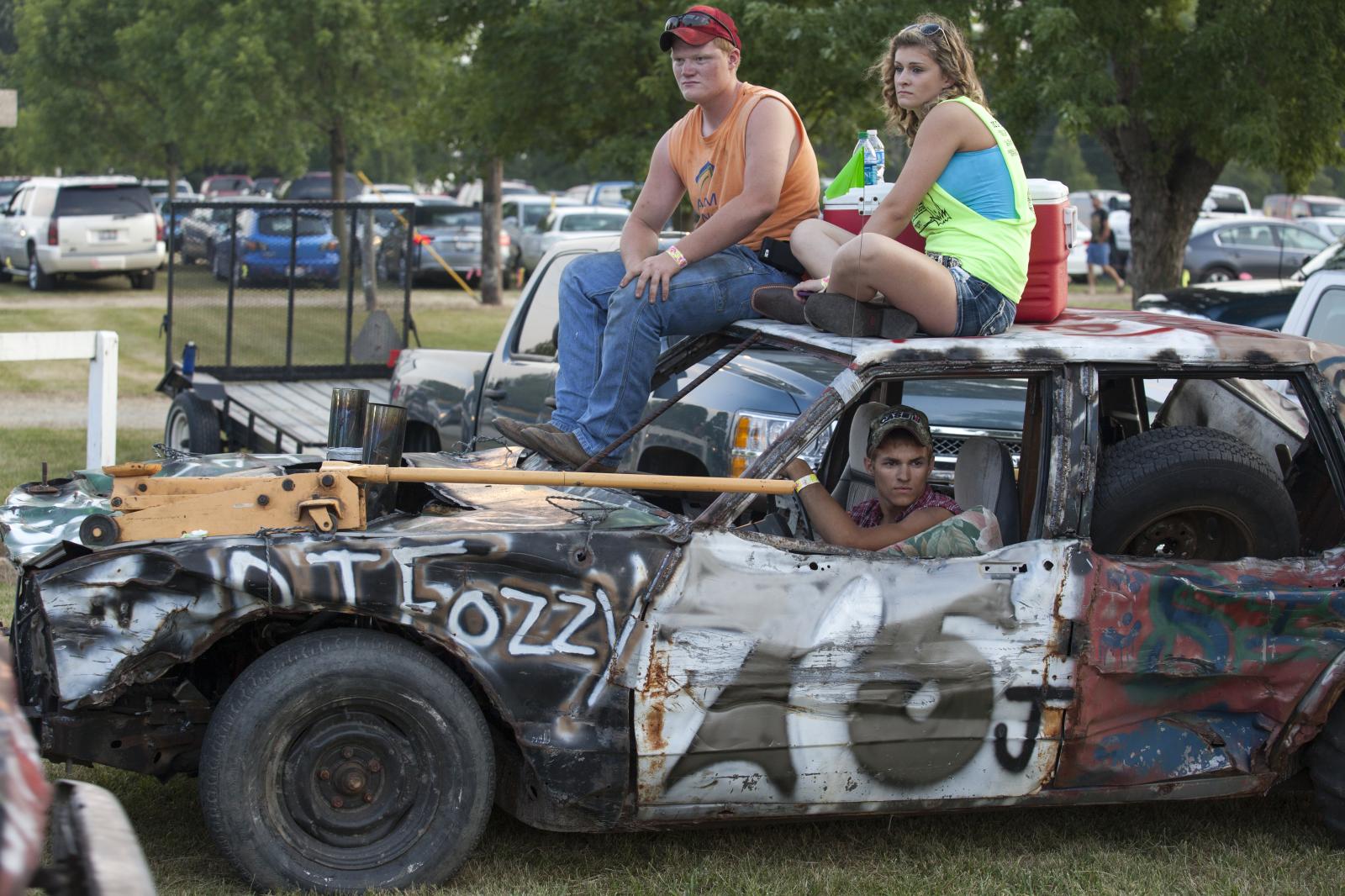Public Project
Car Crashing in Trump Country
Summary
Two days after the Democratic convention that nominated Kamala Harris in Chicago, just 120 miles away from the Democratic stronghold, a competitor proudly flies a Confederate flag high above his car. Pro-Trump flags are everywhere and insults against Biden are painted on twisted metal in an arena full of gladiators hurling souped-up wrecks at each other.
Far from the urban preoccupation about the environment and political correctness, here we recycle old cars by driving them violently at each other: it is the grand finale of consumer madness, it's the Demolition Derbies.
Far from the urban preoccupation about the environment and political correctness, here we recycle old cars by driving them violently at each other: it is the grand finale of consumer madness, it's the Demolition Derbies.
It is the Bureau County Fair in Princeton, a small town of Illinois in the middle of corn fields. It is the weekend and it’s time for Demolition Derbies !
This scene is happening in many small towns every summer in rural America. Far from the urban preoccupation about the environment and political correctness, here we recycle old cars by driving them violently at each other: it is the grand finale of consumer madness.
It is the rebellious side of America—white, defiant, provocative. In this community, people love big, roaring engines, powerful machines that spew thick black exhaust. In the midst of this world, Trump’s success in rural America makes more sense, fueled by the deep distrust of urban elites from New York to California and their bourgeois concerns.
This is working-class America, and sometimes it is poor. Global trade has relocated industries to cheaper countries like Mexico or Asia. Even Caterpillar, once a flagship of American heavy industry, moved its factories from Illinois to Mexico. Downtowns are deserted, storefronts stand empty. Their former owners now work low-paying jobs in nearby supermarkets or fast-food joints along the highway.
There aren’t many good-paying jobs left, of the kind that allowed people to become middle class like their parents did. Small farms and independent farmers struggle to survive the competition from massive agribusiness corporations, which rely on underpaid immigrant labor.
Demolition derbies are the low hanging fruits of the car racing industry.
Competitors are plenty, even with rewards that rarely surpass $1500.
THE DERBY LIFE
No fancy Hauler. No Big Sponsors.
No Pit Stops. No Press releases.
We work Overtime to buy Tires.
Pay our Crew in Burgers and Beer
And Go All out with What We’ve Got
We don’t Do it for Fortune and Fame.
We simply Race to Win.
Because winning… is Enough.
There are heroes and villains, fan favorites, powerhouse teams, and scrappy amateurs. The competition is divided into a dozen categories—massive American cars, pickup trucks, minivans, small sedans… A brutal, high-octane spectacle.
The rules :
All glass, windshield optional, side windows, rear window, headlights and taillights must be removed before arriving. Autos must be swept/vacuumed clean, no junk tires, wheels, metal parts, broken glass, etc. allowed in car. Airbags must be removed.
The cockpit can be modified and reinforced, but the vehicle’s frame must remain unchanged. The car is stripped down to the essentials: an engine, a fuel tank, a few levers, and a steering wheel. For the bigger engines, some steel beams can be added to reinforce the cabin and protect the driver—if you can afford it. Otherwise, cushions and pieces of old sofas serve as makeshift padding to absorb the hits. The doors are welded shut, and the hood is secured with bolts or barbed wire.
Tanker trucks flood the arena, turning the surface into thick, clay-like mud that clings to the tires. The cars have less traction, so they become harder to maneuver and struggle to gain speed.
Each car carries a wooden stick on the driver’s side, which folds down to signal abandonment when the vehicle is completely out of action and can no longer move. At that point, the referees pause the event to evacuate immobilized drivers before the chaos resumes.
In the end, the last car still moving wins—it can last five minutes or stretch out to thirty. It’s a deafening symphony of unleashed engines, relentless collisions, and crushed metal. The air reeks of diesel and burning rubber, flames and smoke rise into the night. The crowd goes wild. The victor stands proud on his wrecked vehicle.
1,734








































































